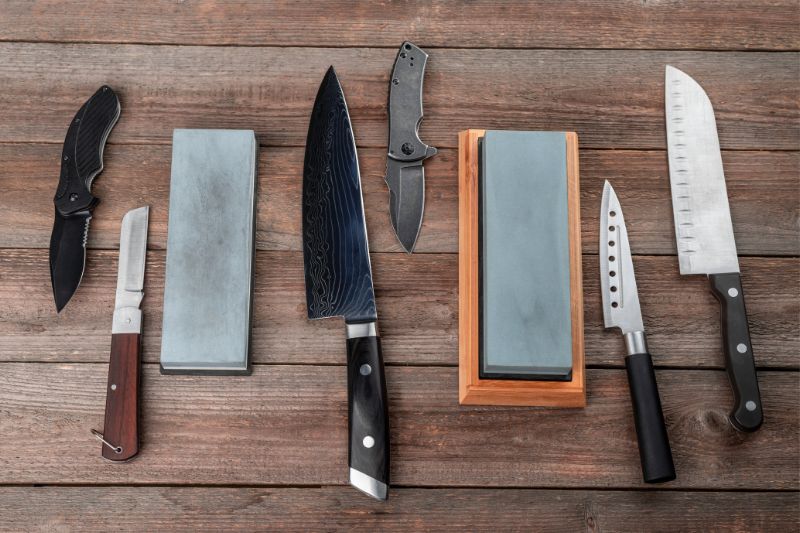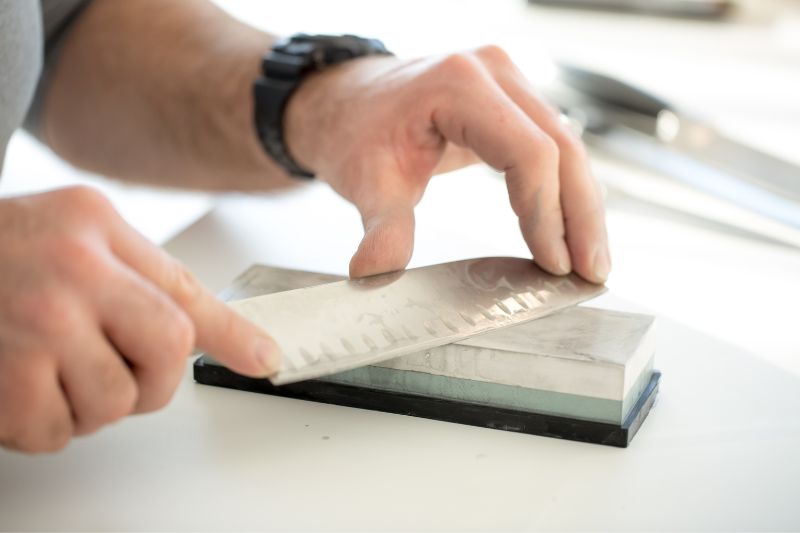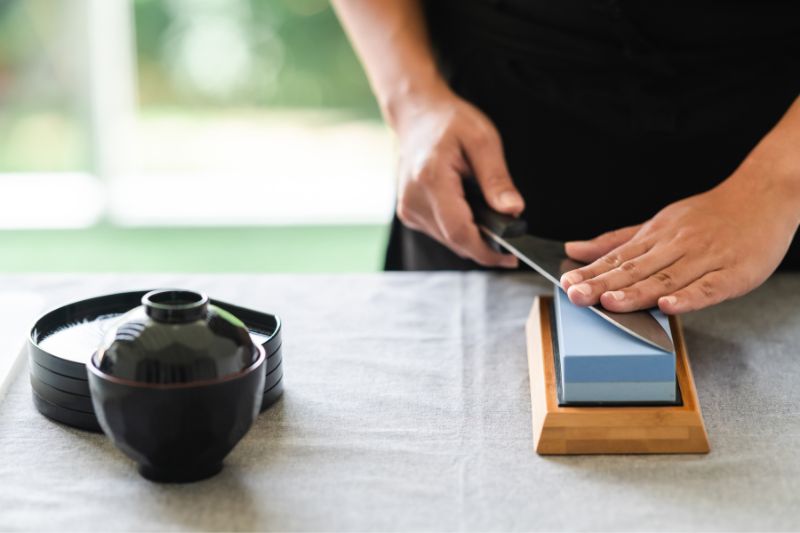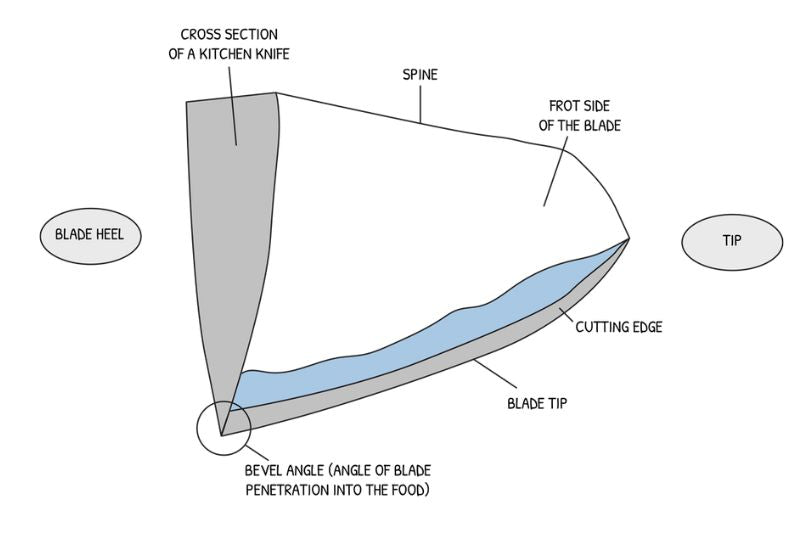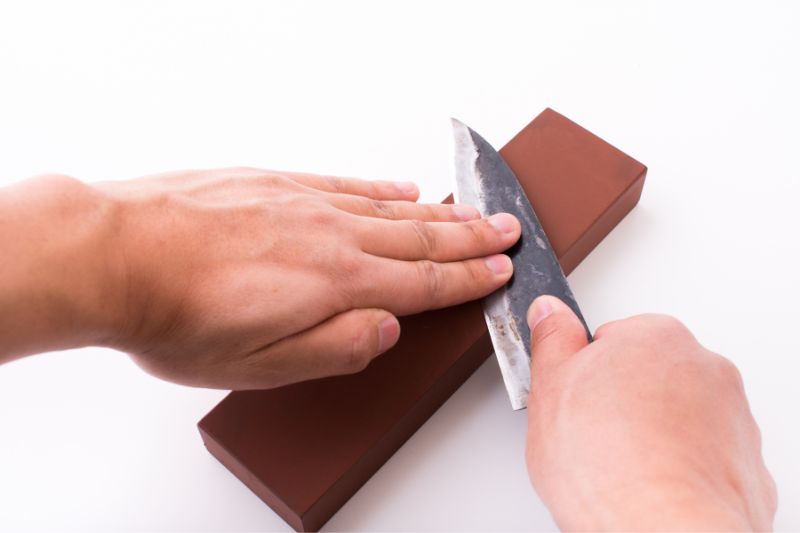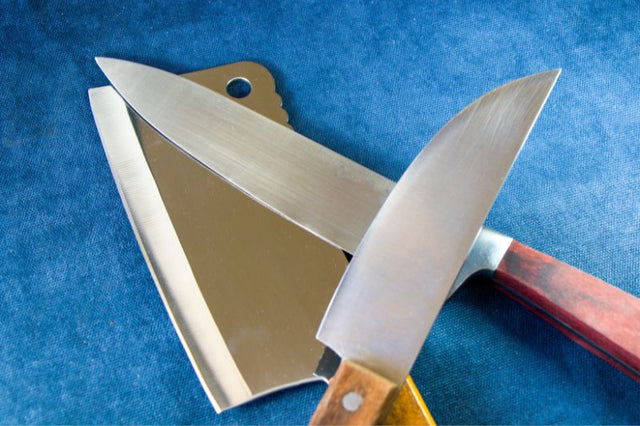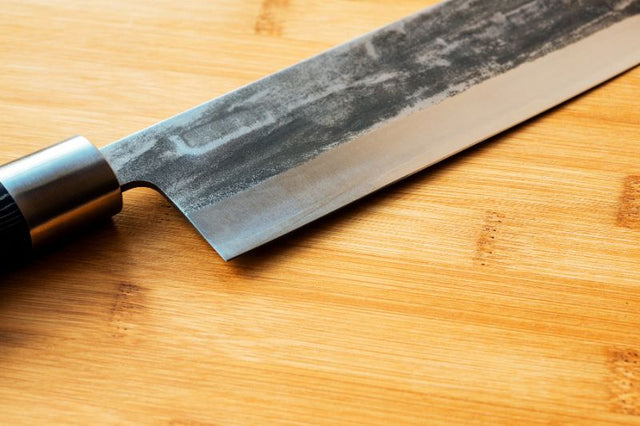If you've joined our knife club and read through your free e-book, you'll know all about sharpening knives with Japanese whetstones. But it might have left you thinking, "hold on, I've seen people using power tools to sharpen their knives in seconds. Why should I use a whetstone when I could do that?" Well, that's a great question. My answer? Sharpening a knife is more complex than it first appears. Using the wrong technique or tool could permanently damage your treasured kitchen pal!
Whetstones or Machines?
Sometimes it might seem like knife aficionados are being pretentious in the extreme care they take with their knives. After all, blades are made of hard steel, so they should be able to handle a belt sander, right? Maybe - but maybe not. In this article, I want to discuss when a machine should and shouldn't be used when keeping an edge sharp. Because there is a significant difference between hand-sharpening with whetstones and using power tools, and it is about more than just the time it takes.
The Dangers of Power Tools
Okay, I don't mean to be too dramatic. We all know that power tools, like any tool, can be dangerous if misused. That's no surprise. But, even if you use one safely, accidents do happen. People become complacent when using a grinder or belt sander, and this can lead to far more incidents. Below I will explain a few ways that power tools can be dangerous for you and your knife.

Transforming the Molecular Structure of Steel
You read that right; you can accidentally change the molecular structure of the blade. Steel is heated to specific temperatures to achieve a uniform balance of hardness and stability. A blade that is extremely hard but unstable will chip easily. One that's stable but soft won't have good edge retention. When you use a belt sander to sharpen your knife, you risk heating the steel and creating uneven spots of hardness. This change can cause cracking or chipping and even dull the blade over time.
But I've Seen Real Japanese Professionals Use Them!
That's true! You may have seen bladesmiths using belt sanders or similar devices. That's because this heating issue can be mitigated. They avoid overheating the steel by dipping the blade into water when it gets too hot or setting it aside to cool. But the only way to know if it's too hot is to avoid wearing gloves when operating the belt sander so that you can feel the heat - not exactly the safest thing to do! I'd leave that to the professionals. Additionally, such tools are usually used to form the initial bevel, not to do the final sharpening. As your purchased knife already has a bevel, you don't need to create a new one.
The Issue of Speed
Using a power tool is a tempting time saver. But you're much more likely to chip a piece of steel off your blade (whether you've heated it up or not) because of the aggressive nature of these machines. You're also more likely to lose grip and send your knife flying across the room. So, unless you're incredibly confident and clad in the proper safety equipment, it's better to take your time with a whetstone. If you're using a good quality Japanese knife, you won't need to sharpen it often. The time you spend sharpening your knife is relatively minimal in the first place. So, five minutes on a whetstone is generally enough unless your knife is severely neglected.
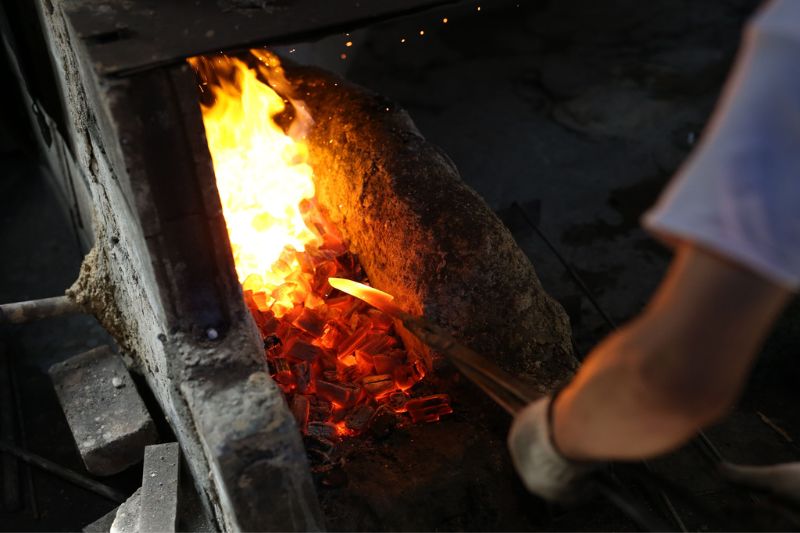
Other Non-Power Tools to Avoid
But it's not just power tools that can wreck your beautiful blade. There are common manual sharpening devices that aren't appropriate for Japanese knives.
The “Knife-Sharpener”
Almost every house has a so-called “knife-sharpener” these days - a small plastic device you run a knife's blade through to shave off some metal. Well, they might as well call it a knife-ruiner because after a while it will create micro-serrations on your blade's edge - that's if it doesn't outright chip it first. It will seem to make your knife sharper but eventually lead it down the road to bluntness. So, save the “knife-sharpener” for your disposable supermarket knife, but keep it far away from your handmade Japanese one.
Honing Rods
Everyone has one of these around, and you may even call this a “knife-sharpener.” It’s a long cylindrical piece of ridged metal attached to a handle. These are great tools for honing European knives. And I say honing because they don't sharpen knives at all. Western knives
are typically made with much softer steel. So, what tends to happen is that the blade's edge, the burr, gets bent to the side with regular use. The honing rod straightens the burr and re-aligns everything to make cutting better again. But, because your Japanese knife is made with rigid, hard steel, you're more likely to chip it than to restore the blade.
Safe Power Tool Alternatives
If, however, you have many knives (or exceedingly dull ones), there are appropriate power tools that are significantly safer to use. They come under different names, such as a grinder or speed sharpener. They are essentially circular whetstones attached to a motor that spins them rapidly. There are a few things you should check first before using one:
- Ensure that it uses a synthetic material similar to a Japanese whetstone.
- Look for a 'wet' feature so that you can use water to gently polish the edge of your blade in the same manner as a whetstone. The water will also keep it cool.
- You may want a double-grinder with two stones with different grits, as it is still best to use a fine-grit stone to finish your sharpening.

The risks I described earlier apply, although to a lesser extent, and there's still a greater chance that you might misshape the profile of your knife - leading to a curvier or flatter blade than you might want. With that said, these devices can benefit those who need them, whether for efficiency or health reasons where using a whetstone is impractical. But, generally speaking, most home cooks and even professionals won't need anything this technical or expensive.
Final Word
Here's the best advice I can give you: use a Japanese whetstone. It can be intimidating at first, but once you've practiced a few times, it's more straightforward than it first appears. You'll mitigate many factors that could damage your knife or yourself. And, if you do it regularly, it'll only take a few minutes. If it's not something you want to do, find a solid local professional who offers whetstone services instead. Save yourself some pain in the wallet by keeping your knife out of harm's way.
Get Free Bonus Books
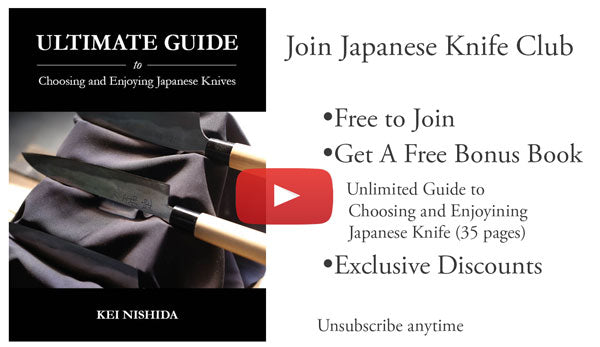
Sign up for free to the Japanese Knife Club to get advice and exclusive articles about how to choose Japanese Knives, and tips and tricks for using Japanese knives.
About the author
Kei Nishida
Author, CEO Dream of Japan
Certification: PMP, BS in Computer Science
Education: Western Washington University
Kei Nishida is a passionate advocate of Japanese craftsmanship, a writer, and the founder and CEO of Japanese Knife Co., Japanese Green Tea Co., and Japanese Coffee Co., all part of Dream of Japan.
His journey began with a mission to introduce the world to the exquisite flavors of Japanese green tea. Through Japanese Green Tea Co., he pioneered the import of premium tea grown in nutrient-rich sugarcane soil, earning multiple Global Tea Champion awards. He then expanded into the world of coffee, launching Japanese Coffee Co., the first company to bring Sumiyaki charcoal-roasted coffee to a global audience.
With a deep appreciation for Japanese artistry and tradition, Kei turned his attention to one of Japan’s most revered crafts: bladesmithing. Through Japanese Knife Co., he made handcrafted katana-style knives, created by a renowned katana maker, available outside Japan for the first time. These exceptional knives embody centuries of samurai sword-making expertise, blending tradition with modern functionality for chefs and collectors alike.
Kei’s journey continues as he uncovers and shares Japan’s hidden treasures—one sip, one blade, and one legacy at a time.

